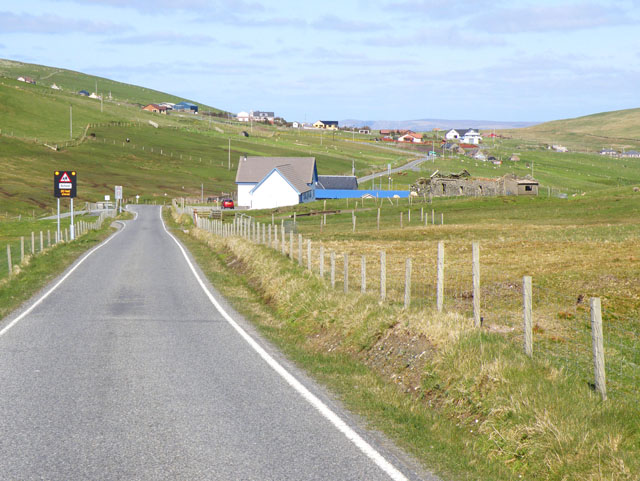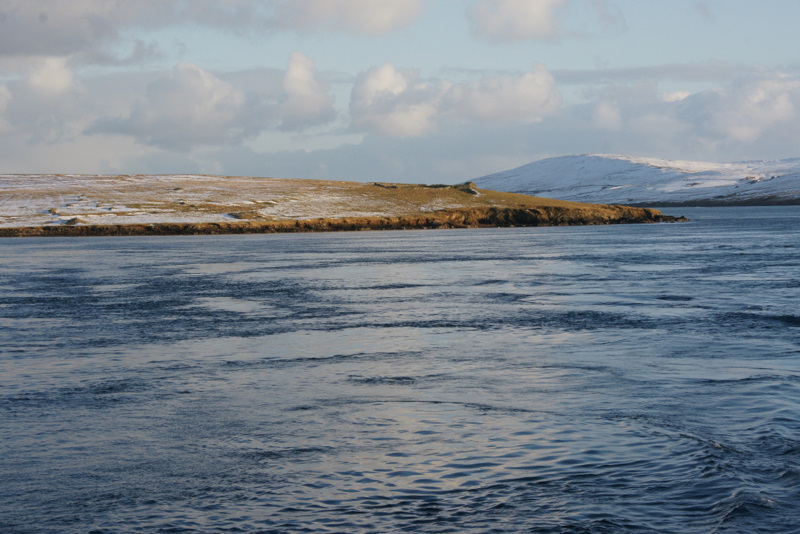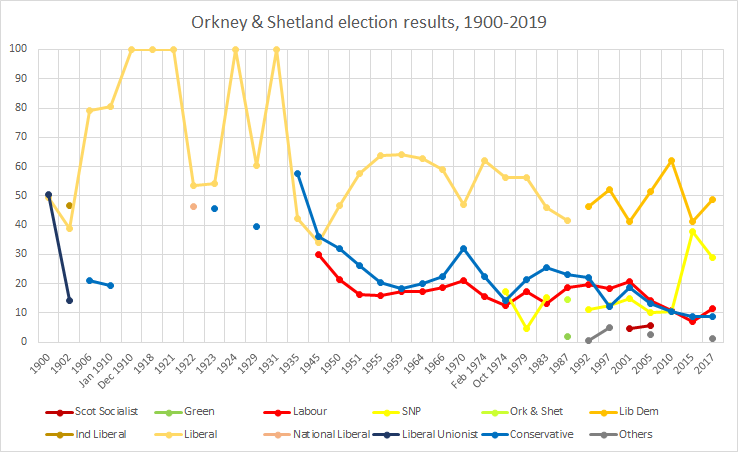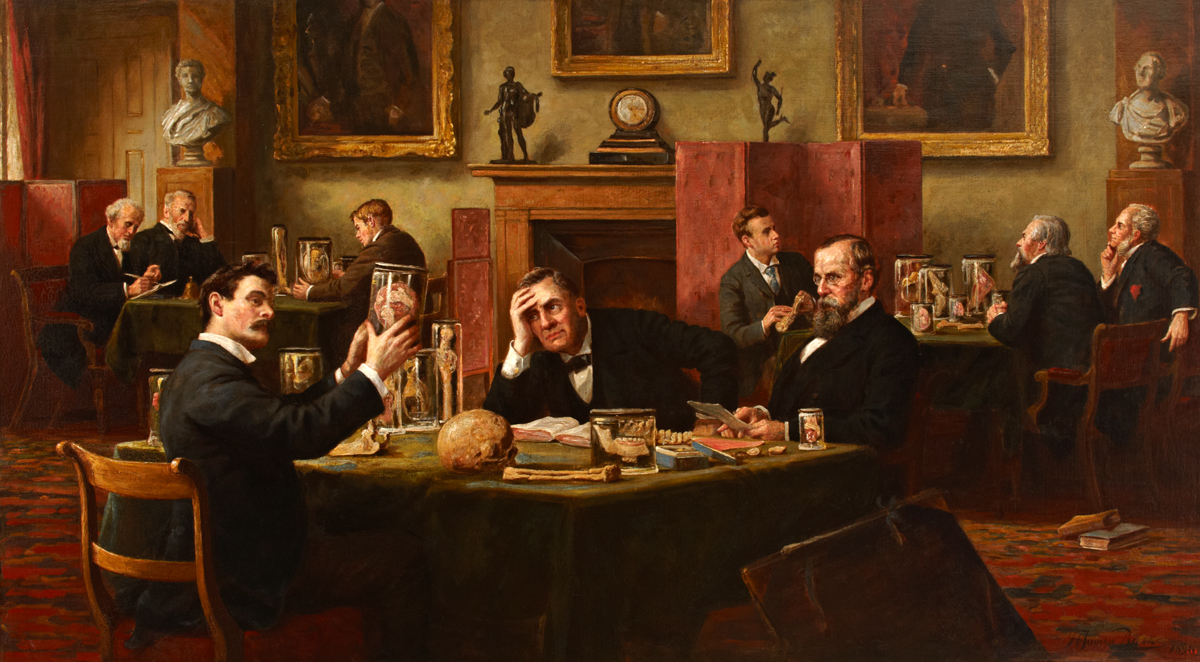|
Ollaberry
Ollaberry (Old Norse: Olafrsberg, meaning Olaf's Hill) is a village on Mainland, Shetland, Scotland on the west shore of Yell Sound, north by road from Brae. Ollaberry Churchyard contains a Listed B monument, sculpted by John Forbes in 1754. Ollaberry Primary School was established in 1873. Geography Ollaberry is situated within the parish of Northmaven in the Northmavine area of the Mainland of the Shetland Islands. Ollaberry was formerly a separate parish but united with Northmaven in the 16th century. By road, Ollaberry is north of Brae and east-northeast of Hillswick. It lies on Ollaberry Bay on the west shore of Yell Sound, with the island of Lamba about to the east. There is a small beach and pier at Ollaberry, and a steep cliff falling to the sea to the northeast of the settlement. Landmarks The village contains Ollaberry Kirk. In the churchyard is a large memorial with Corinthian-like columns, the work of sculptor John Forbes in 1754. Known as Ollaberry Kirkyard Mo ... [...More Info...] [...Related Items...] OR: [Wikipedia] [Google] [Baidu] |
Yell Sound
Yell Sound is the strait running between Yell (island), Yell and Mainland, Shetland, Scotland. It is the boundary between the Mainland and the North Isles and it contains many small islands. Sullom Voe, on the shores of which is a substantial oil terminal, is an arm of Yell Sound. The ferry to the North Isles crosses the sound, which can experience strong tides and adverse weather conditions. There are numerous shipwreck sites and several lighthouses to guide shipping. Yell Sound is mentioned briefly in the medieval ''Orkneyinga saga'' and during the 19th century there was a short flourishing of the kelp industry. Commercial fishing has long been a mainstay of the local economy and part of the sound is as Special Area of Conservation set up to protect the local wildlife. Early history The Old Norse name was ''Alasund'' although the original meaning of the name is not clear.Anderson, Joseph (Ed.) (1893) ''Orkneyinga Saga''. Translated by Jón A. Hjaltalin & Gilbert Goudie. Edinbu ... [...More Info...] [...Related Items...] OR: [Wikipedia] [Google] [Baidu] |
Andrew Rodger Waterston
Dr Andrew Rodger Waterston OBE FRSE FRES (born Ollaberry, 30 March 1912, died Edinburgh, 12 July 1996) was a Scottish zoologist, specialising in malacology and entomology. He was interested in the insect fauna of the Middle East and in the fauna of the Outer Hebrides. He was generally known as Rodger Waterston. Early life and pre war career Rodger Waterston was born in the manse on 30 March 1912 in Ollaberry on mainland Shetland, where his father, the entomologist James Waterson, was a minister in the United Free Church at the time. When his father was appointed as an entomologist at the Imperial Bureau of Entomology in 1917 the family moved to London. In London, Rodger attended St Paul's School. Through his father he came to know many of the respected entomologists of that time, whilst he developed his own interests in entomology and acquired the field skills which were to serve him in his career. He returned to Scotland, where he studied Zoology at the University of Edinburgh ... [...More Info...] [...Related Items...] OR: [Wikipedia] [Google] [Baidu] |
Northmavine
Northmavine or Northmaven ( non, Norðan Mæfeið, meaning ‘the land north of the Mavis Grind’) is a peninsula in northwest Mainland Shetland in Scotland. The peninsula has historically formed the civil parish Northmavine. The modern Northmavine community council area has the same extent. The area of the parish is given as 204.1 km2. Summary The peninsula includes the northernmost part of Mainland, and the civil parish, spelt ''Northmaven'', comprises a number of adjacent islands, and measures by . Northmavine is in the north west of the island, and contains the villages of Hillswick, Ollaberry, and North Roe. An isthmus, Mavis Grind ('), about a hundred yards across, forms the sole connection with the rest of Mainland. The coast is indented by numerous bays and consists largely of high, steep rocks. It has a number of high, fissured, cavernous cliffs on the west coast and consists of many skerries, islets, and offshore rocks. The interior has a very small amount of a ... [...More Info...] [...Related Items...] OR: [Wikipedia] [Google] [Baidu] |
Lamba, Shetland
Lamba is an uninhabited island in Yell Sound in Shetland. It lies north of the entrance to the Sullom Voe inlet and east of the Mainland coastline near Ollaberry. Rising 35 metres above sea level, it has an area of . Its main features are a 27m high light marking the entrance to Sullom Voe, and an adjacent communications mast. There are similarly named places, Lamba in the Faroe Islands and Lambay in Ireland Ireland ( ; ga, Éire ; Ulster Scots dialect, Ulster-Scots: ) is an island in the Atlantic Ocean, North Atlantic Ocean, in Northwestern Europe, north-western Europe. It is separated from Great Britain to its east by the North Channel (Grea .... Footnotes Uninhabited islands of Shetland {{Shetland-geo-stub ... [...More Info...] [...Related Items...] OR: [Wikipedia] [Google] [Baidu] |
Northmaven
Northmavine or Northmaven ( non, Norðan Mæfeið, meaning ‘the land north of the Mavis Grind’) is a peninsula in northwest Mainland Shetland in Scotland. The peninsula has historically formed the civil parish Northmavine. The modern Northmavine community council area has the same extent. The area of the parish is given as 204.1 km2. Summary The peninsula includes the northernmost part of Mainland, and the civil parish, spelt ''Northmaven'', comprises a number of adjacent islands, and measures by . Northmavine is in the north west of the island, and contains the villages of Hillswick, Ollaberry, and North Roe. An isthmus, Mavis Grind ('), about a hundred yards across, forms the sole connection with the rest of Mainland. The coast is indented by numerous bays and consists largely of high, steep rocks. It has a number of high, fissured, cavernous cliffs on the west coast and consists of many skerries, islets, and offshore rocks. The interior has a very small amount of a ... [...More Info...] [...Related Items...] OR: [Wikipedia] [Google] [Baidu] |
Orkney And Shetland (UK Parliament Constituency)
Orkney and Shetland is a constituency of the House of Commons of the Parliament of the United Kingdom. It elects one Member of Parliament (MP) by the first past the post system of election. In the Scottish Parliament, Orkney and Shetland are separate constituencies. The constituency was historically known as Orkney and Zetland (an alternative name for Shetland). In the 2014 Scottish independence referendum, 65.4% of the constituency's electors voted for Scotland to stay part of the United Kingdom. Creation The British parliamentary constituency was created in 1708 following the Acts of Union, 1707 and replaced the former Parliament of Scotland shire constituency of Orkney & Zetland. Boundaries The constituency is made up of the two northernmost island groups of Scotland, Orkney and Shetland. A constituency of this name has existed continuously since 1708. However, before 1918 the town of Kirkwall (the capital of Orkney) formed part of the Northern Burghs constituency. It i ... [...More Info...] [...Related Items...] OR: [Wikipedia] [Google] [Baidu] |
United Free Church Of Scotland
The United Free Church of Scotland (UF Church; gd, An Eaglais Shaor Aonaichte, sco, The Unitit Free Kirk o Scotland) is a Scottish Presbyterian denomination formed in 1900 by the union of the United Presbyterian Church of Scotland (or UP) and the majority of the 19th-century Free Church of Scotland. The majority of the United Free Church of Scotland united with the Church of Scotland in 1929. Origins The Free Church of Scotland seceded from the Church of Scotland in the Disruption of 1843. The United Presbyterian Church was formed in 1847 by a union of the United Secession and Relief Churches, both of which had split from the Church of Scotland. The two denominations united in 1900 to form the United Free Church (except for a small section of the Free Church who rejected the union and continued independently under the name of the Free Church). Legal dispute:''The Free Church Case'' The minority of the Free Church, which had refused to join the union, quickly tested i ... [...More Info...] [...Related Items...] OR: [Wikipedia] [Google] [Baidu] |
FRSE
Fellowship of the Royal Society of Edinburgh (FRSE) is an award granted to individuals that the Royal Society of Edinburgh, Scotland's national academy of science and letters, judged to be "eminently distinguished in their subject". This society received a royal charter in 1783, allowing for its expansion. Elections Around 50 new fellows are elected each year in March. there are around 1,650 Fellows, including 71 Honorary Fellows and 76 Corresponding Fellows. Fellows are entitled to use the post-nominal letters FRSE, Honorary Fellows HonFRSE, and Corresponding Fellows CorrFRSE. Disciplines The Fellowship is split into four broad sectors, covering the full range of physical and life sciences, arts, humanities, social sciences, education, professions, industry, business and public life. A: Life Sciences * A1: Biomedical and Cognitive Sciences * A2: Clinical Sciences * A3: Organismal and Environmental Biology * A4: Cell and Molecular Biology B: Physical, Engineering and ... [...More Info...] [...Related Items...] OR: [Wikipedia] [Google] [Baidu] |
Tasmania
) , nickname = , image_map = Tasmania in Australia.svg , map_caption = Location of Tasmania in AustraliaCoordinates: , subdivision_type = Country , subdivision_name = Australia , established_title = Before federation , established_date = Colony of Tasmania , established_title2 = Federation , established_date2 = 1 January 1901 , named_for = Abel Tasman , demonym = , capital = Hobart , largest_city = capital , coordinates = , admin_center = 29 local government areas , admin_center_type = Administration , leader_title1 = Monarch , leader_name1 = Charles III , leader_title2 = Governor , leader_name2 ... [...More Info...] [...Related Items...] OR: [Wikipedia] [Google] [Baidu] |
Royal College Of Surgeons Of England
The Royal College of Surgeons of England (RCS England) is an independent professional body and registered charity that promotes and advances standards of surgical care for patients, and regulates surgery and dentistry in England and Wales. The College is located at Lincoln's Inn Fields in London. It publishes multiple medical journals including the ''Annals of the Royal College of Surgeons of England'', the '' Faculty Dental Journal'', and the '' Bulletin of the Royal College of Surgeons of England''. History The origins of the college date to the fourteenth century with the foundation of the "Guild of Surgeons Within the City of London". Certain sources date this as occurring in 1368. There was ongoing dispute between the surgeons and barber surgeons until an agreement was signed between them in 1493, giving the fellowship of surgeons the power of incorporation. This union was formalised further in 1540 by Henry VIII between the Worshipful Company of Barbers (incorporated 14 ... [...More Info...] [...Related Items...] OR: [Wikipedia] [Google] [Baidu] |
Sir William Cheyne, 1st Baronet
Rear admiral Sir William Watson Cheyne, 1st Baronet, (14 December 1852 – 19 April 1932) was a Scottish surgeon and bacteriologist, who pioneered the use of antiseptic surgical methods in the United Kingdom. Early life and education Cheyne was born at sea off Hobart, Tasmania. His father, Andrew Cheyne, was the eldest of two illegitimate children born to James Cheyne, who was the youngest brother of John Cheyne, the Laird of Tangwick (Northmavine, Shetland). His father grew up at the Tangwick Haa, and went to sea around the age of twelve, rising to command a brig in the Far East at the age of 22. His mother Eliza, the daughter of the Rev. William Watson, died in 1856, leaving Willam Cheyne to be brought up by his grandfather, the Rev. William Watson, and latterly by his aunt and uncle-in-law, in Fetlar. In 1864, he was sent to Aberdeen Grammar School, and he remained there until 1868 when he went to King's College, Aberdeen to study for an Arts degree, which he did not complete ... [...More Info...] [...Related Items...] OR: [Wikipedia] [Google] [Baidu] |





